Random Reviews: WildC.A.T.S. Compendium (The Image Review-lution, Part 4)
Jim Lee's Image Comics contribution has problematic pacing and vapid vocabulary, but it manages to tell a complete, compelling story
—by Nathan on November 12, 2023—
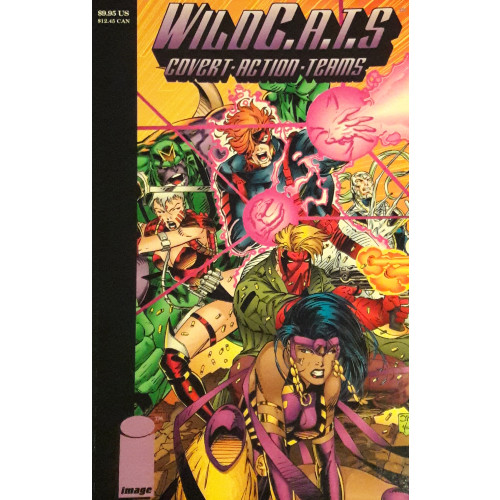
We are diving back into the increasingly ridiculous, somewhat mind-numbing world of "early Image Comics." Over the last three posts, I’ve unpacked the initial issues of three of Image’s earliest series–Rob Liefeld’s Youngblood, Todd McFarlane’s Spawn, and Erik Larsen’s Savage Dragon. The results have not been overwhelmingly positive; I enjoyed Savage Dragon more than Youngblood or Spawn, but even then, I walked away with a few issues. Even when constructed upon intriguing premises, these series often feel cluttered and rushed.
We’ve launched ourselves into a world where shadow-men stalk city streets, heroes nobly invade foreign countries to depose dictators, and an amnesiac dragon-man (who may or may not be an alien) faces some subtle racism when he joins the Chicago Police Department. All of this feels like fairly standard comics stuff–who hasn’t leafed through issues chock full of goofy plots, alien adversaries, and randomly introduced technological marvels? The modern comic universe tends to be eclectic…so why complain about it here?
As we head into Jim Lee’s contribution to the burgeoning Image Comics universe, we’ll pick apart exactly how it fits into this growing world…and how its original concepts both help and hinder its developing narrative.
WildC.A.T.S. Compendium
Writers: Jim Lee, Brandon Choi
Penciler: Jim Lee
Inkers: Scott Williams, Karl Altstatter, John Tighe, Rich Johnson
Colorists: Joe Rosas, Joe Chido, Wendy Broome, Joe Mendoza, Rod Mojica, Steve Oliff, Digital Chameleon
Letterer: Michael Heisler
Issues Collected: WildC.A.T.S. #1-4
Volume Publication Date: July 1999
Issue Publication Dates: August-September 1992, December 1992, March 1993
Publisher: Image Comics
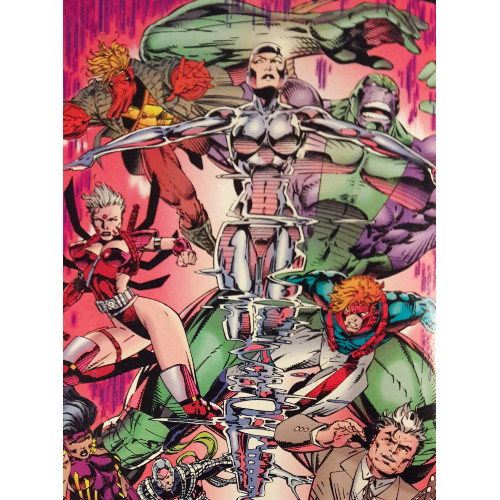
You ever read a fantasy or sci-fi novel where the author peppers you with names and places that are vitally important (usually denoted by capitalizing the words), but you don’t yet understand why they’re important and just tuck them all away until they become important?
That’s kinda what reading these first issues of WildC.A.T.S. feels like.
The "Compendium" in the title, according to the DC Fandom database, is not just the name of the volume collecting this story (which, if it were solely that, would be a gross misnomer–DC’s actually publishing a legit WildC.A.T.S. Compendium next year, more akin to the phonebook-sized volumes which collect larger series such as The Walking Dead or Invincible, for example). "Compendium" is apparently the story’s title, which makes very little sense. Sure, this is a collection–of words, names, places, powers–but beyond that, very little of this volume feels exhaustive…hence why, I’m sure, DC’s publishing that actual Compendium next year…which should also serve as a reminder that Image no longer publishes these characters, unlike Spawn or Savage Dragon.
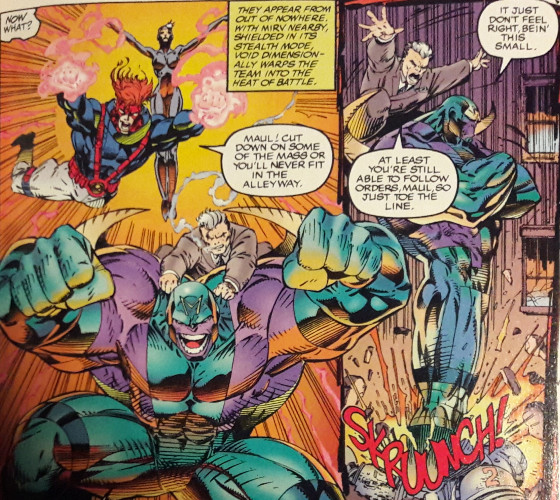
Looking over their bibliography, I see WildC.A.T.S. seems to have stuck around surprisingly longer than I would have assumed, not that the team's first outing would give that impression. Lee’s first four issues, with story assistance from Brandon Choi, outline a concept that feels somewhat more fleshed out than some of its other counterparts. This isn't Savage Dragon, which has a legitimate mystery guiding its plot, but it’s also not quite Youngblood, which felt haphazard, a series of concepts tossed together in the weirdest salad you could imagine.
Lee’s clearly put more thought into his premise, as indicated by plot points which eventually congeal and make sense. Two scenes very early in the series stand out as somewhat confusing and misplaced, yet their repetition later in the volume makes me believe Lee intentionally placed them early because he knew he’d offer an explanation later. Lee’s characters are comfortable with each other, work as a unit, exist in a world that Lee’s already defined in his imagination before spelling it out here.
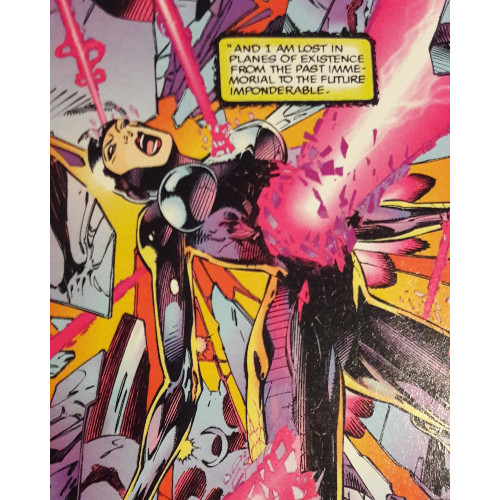
Where Lee struggles is catching the reader up to speed. That’s where the "very important words" I mentioned in the beginning come in. We are verbally drenched in names and ideas far before they begin making any shred of sense to us. We learn about orbs, places, events, characters which don’t warrant a full explanation until deeper into the series. Time, somewhat annoyingly, skips between the past, the present, and a date referred to as "Today," which I can only assume is different from "the present" because Lee intends for "the present" to mean some ill-defined stretch of time surrounding "Today." See why it gets a mite confusing?
Again, it’s clear that Lee’s put a lot of thought into the world-building–who makes up WildC.A.T.S.? Their adversaries? What are the rules of his corner of the Image Universe?–and, wisely, he doesn’t drench us in exposition explaining every little detail and plot point. He wisely waits. However, because we’re given so many "very important words," you end up feeling like a fish in a sea filled with worms on hooks–everything looks appealing, with the promise of more to come, but you don’t quite know which one to choose (and let’s say, for the sake of the argument, we’re fish that wanna grab the worms). What do I look forward to? The unraveling of the central plot? The answer to Mystery A or Mystery B? An explanation for this character or that character?
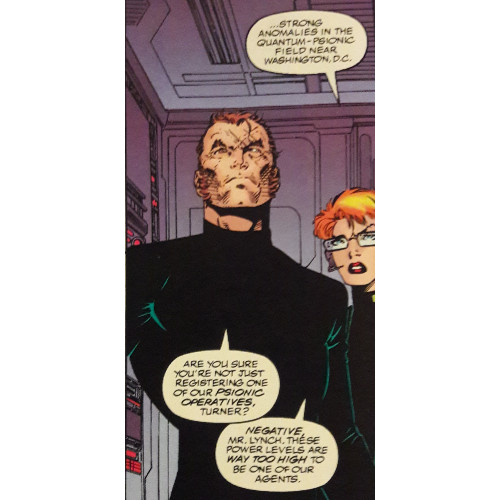
As a result, I did feel more compelled to read than I did, say, Youngblood. But, simultaneously, I felt the need to keep all the jumbled bits and pieces of information straight. Just as I was getting comfortable with a new character or group–bam!–another new hit of information came my way, and I began paying attention to that instead.
The major downside Lee faces by throwing so much surface level info our way is that we’re left with very little depth to cling to. Understandably, this volume collects four issues of a long-running series about an entire superhuman team, but even so, I walked away not caring much for any of the central characters Lee introduces. When one protagonist is placed in a situation where they may need to sacrifice themselves for their cause, I kinda shrugged my shoulders and went along with it. I didn’t care much that this character might have died; I felt no connection with this individual–they had no backstory which made their death poetic, no loved ones they would leave behind. They could’ve been replaced with any other WildC.A.T. member…and, if they had, I probably would’ve reacted the exact same way.
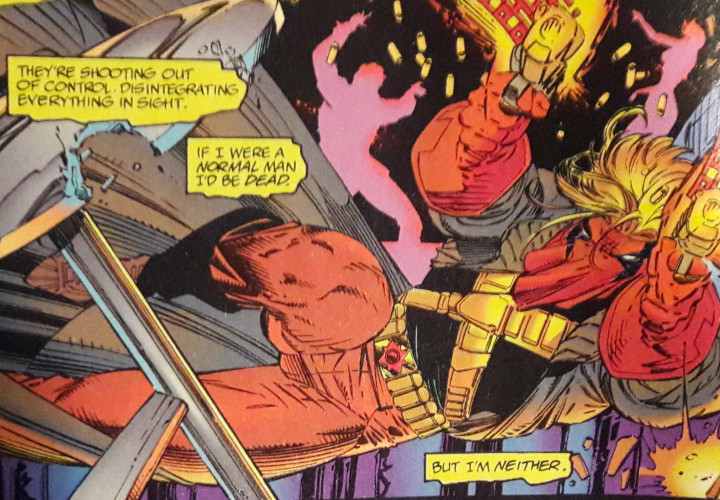
As noted, as the volume progresses, events begin to make a bit more sense. Those confusing early scenes are cleared up, a villain’s plot is revealed to be surprisingly solid, and the stakes are considerably raised for our heroes to confront. Though the series would continue far beyond these initial four issues, we’re given a full story here, just enough length to make it a proper miniseries. Yes, had WildC.A.T.S. been cancelled after issue #4, we’d end up with a fairly shallow limited series, with a somewhat satisfying conclusion but very little characterization. Narratively, you could cut things off right here and be left with a gift-wrapped series. You’d barely know anything about your main characters, but if you were one of the die-hard Image fans looking for bullets, brawls, and big booms at the time, you’d couldn’t go wrong with this series.
Cameo appearances by Youngblood, in a similar fashion to Bedrock’s use in Savage Dragon, make for some temporarily compelling combatants for these WildC.A.T.S., putting an interesting spin on how these heroes view each other. Much like Bedrock’s confrontation with the green man, Lee uses Liefeld's team to interesting effect, highlighting a world where our heroes can be at odds. Lee’s inclusion of Youngblood, fortunately, makes narrative sense, and adds a new dynamic to the Image Universe: if Youngblood is supposed to be a group akin to the Avengers, with their positive public image and government glad-handing, then the WildC.A.T.S. are more like the Thunderbolts, covert and shadowed, able to sneak into places a public-facing group cannot.
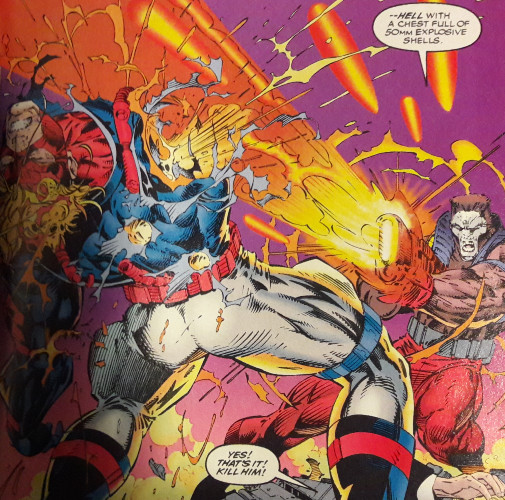
Four volumes in (of the seven titles I intend to review), and I’m starting to see Image as more of the Marvel Comics of the 1960s rather than the modern-day Marvel Cinematic Universe. The MCU was constructed intentionally, stories feeding into each other, characters and plots building to Joss Whedon’s Avengers. The Marvel Comics of the 60s were introduced haphazardly–yeah, Spidey tried joining the FF in his first issue, and the X-Men partied with the likes of Ka-Zar and Namor, but these were largely one-offs. It would take a long time before stories intentionally fueled each other; Marvel’s interconnected world-building was, initially, confined to one-off appearances and cameos. The appeal was more the individual titles themselves–pick up Fantastic Four if you want a family-style team book, Amazing Spider-Man if you enjoy moody superpowered teenagers, Incredible Hulk if you like a dash of horror with your heroics. Image feels the same. You got Spawn if you want a morally grim vigilante, Youngblood if you like your heroes a tad speaky-cleaner, WildC.A.T.S. if you enjoy militant marauders striking from the shadows. There’s something for everyone!
WildC.A.T.S. isn’t bad. It’s got its pacing problems and can sometimes feel like you’re working through a smorgasbord of words which may or may not have any actual meaning to them. But it feels like a complete story, masterminding madmen and all. The series displays more promise than Youngblood or Spawn, but for my money, Savage Dragon is still the series to beat as I read through these titles.